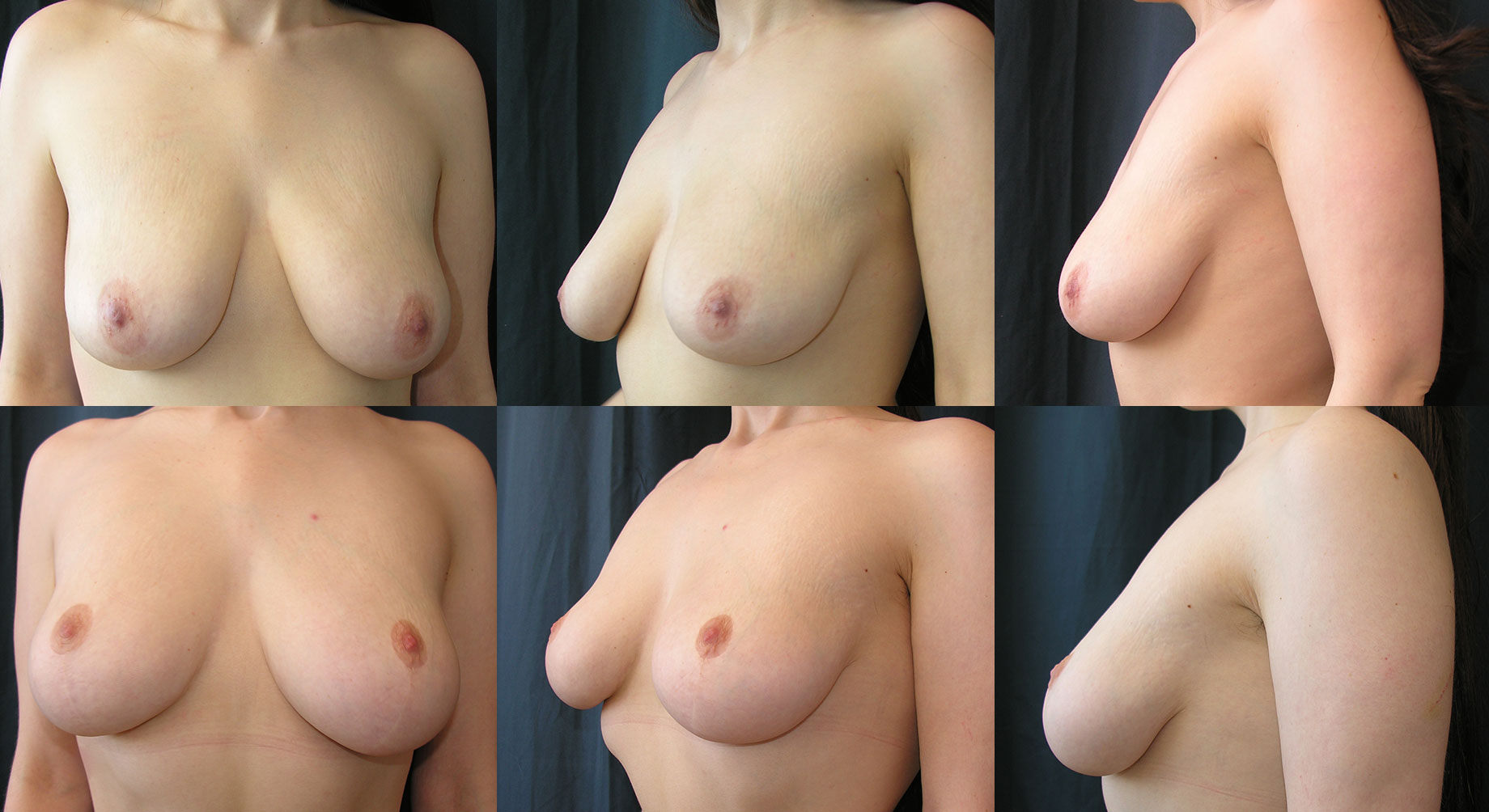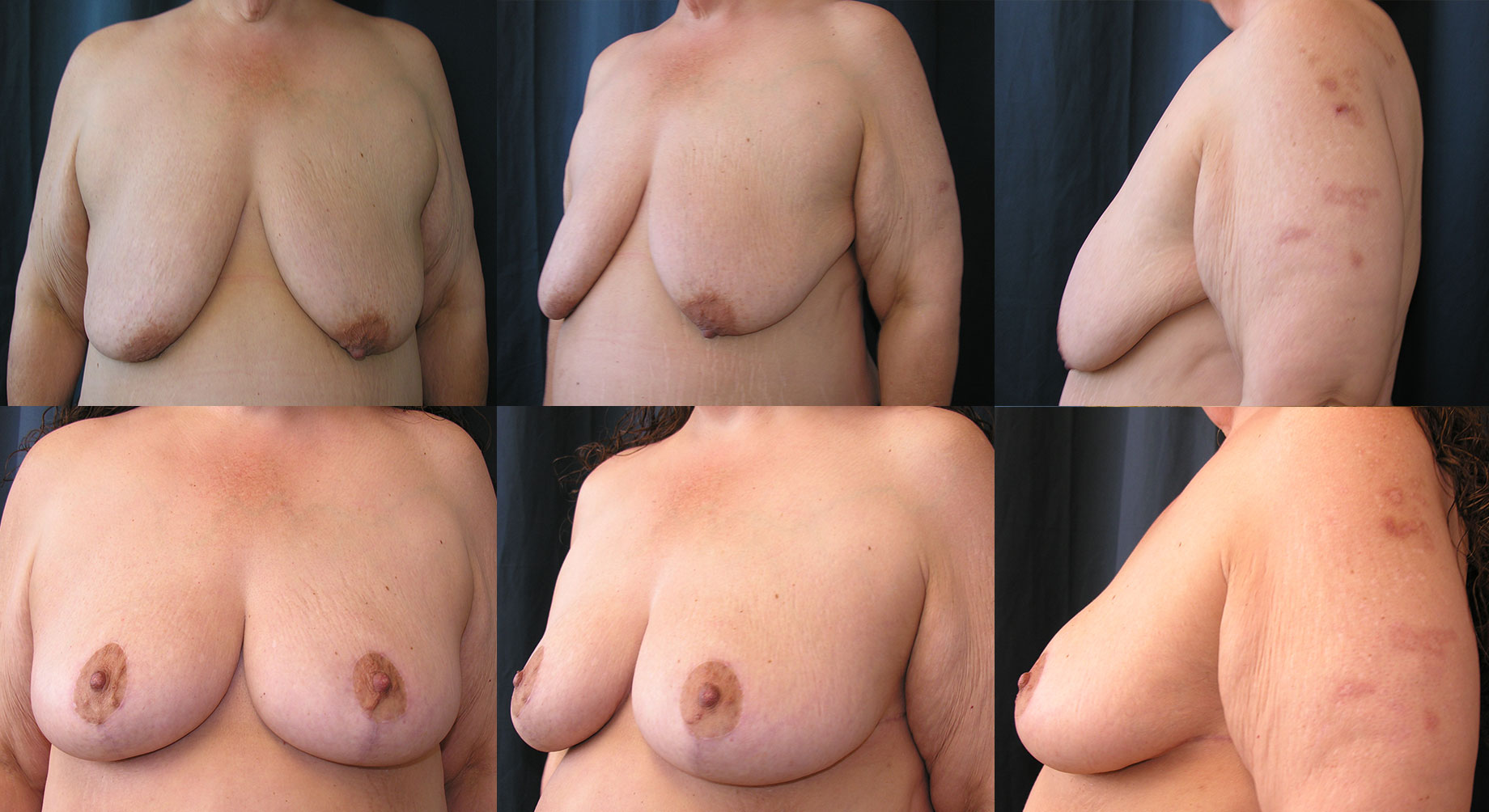Mastopexy
Breast Lift
Some women naturally develop breasts that hang low and/or have a low sitting nipple and areola. Some women develop ptotic (droopy) breasts after breast feeding, weight loss or aging. A breast lift brings the nipple and areola up to a more youthful position on the breast as well as removes excess skin. Often the size of the areola is also reduced. The resultant scars are located around the areola, down the front of the breast and in some cases along the crease under the breast. Dr. La Via will be able to determine the extent of the scars once she has examined you.
Breast lift surgery does not significantly change the size of your breasts or round out the upper part of your breast. If you want your breasts to look fuller or smaller, you might want to consider either breast augmentation or breast reduction surgery.
Is it right for me?
Breast lift surgery is a highly individualized procedure and you should do it for yourself, not to fulfill someone else’s desires or to try to fit any sort of ideal image.
A breast lift is a good option for you if:
- You are physically healthy and maintain a stable weight
- You do not smoke
- You have realistic expectations
- You are bothered by the feeling that your breasts sag, have lost shape and volume
- Your breasts have a flatter, elongated shape or are pendulous
- When unsupported, your nipples fall below the breast crease
- Your nipples and areolas point downward
- You have stretched skin and enlarged areolas
- One breast is lower than the other
The results of your breast lift surgery are immediately visible. Over time, post-surgical swelling will resolve and incision lines will fade.
Satisfaction with your new image should continue to grow as you recover and realize the fulfillment of your goal for breasts which have been restored to a more youthful and uplifted position.
The decision to have breast lift surgery is extremely personal and you’ll have to decide if the benefits will achieve your goals and if the risks and potential complications are acceptable.
Your plastic surgeon and/or staff will explain in detail the risks associated with surgery. You will be asked to sign consent forms to ensure that you fully understand the procedure you will undergo and any risks or potential complications.
The risks include:
- Unfavorable scarring
- Bleeding (hematoma)
- Infection
- Poor healing of incisions
- Changes in nipple or breast sensation, which may be temporary or permanent
- Anesthesia risks
- Breast contour and shape irregularities
- Skin discoloration, permanent pigmentation changes, swelling and bruising
- Damage to deeper structures such as nerves, blood vessels, muscles, and lungs can occur and may be temporary or permanent
- Allergies to tape, suture materials and glues, blood products, topical preparations or injected agents
- Breast asymmetry
- Fatty tissue deep in the skin could die (fat necrosis)
- Fluid accumulation
- Excessive firmness of the breast
- Potential partial or total loss of nipple and areola
- Deep vein thrombosis, cardiac and pulmonary complications
- Blood clots
- Pain, which may persist
- Possibility of revisional surgery
You should know that:
- Breast lift surgery can interfere with diagnostic procedures
- Breast and nipple piercing can cause an infection
- Breast lift surgery does not normally interfere with pregnancy, but if you are planning to have a baby, your breast skin may stretch and offset the results of mastopexy and you may have more difficulty breastfeeding after this operation
After your breast lift procedure is completed, dressings or bandages will be applied to the incisions. You’ll need to wear an elastic bandage or support bra to minimize swelling and support your breasts as they heal.
A small, thin tube may be temporarily placed under the skin to drain any excess blood or fluid that may collect. The tube is removed after 5-7 days.


